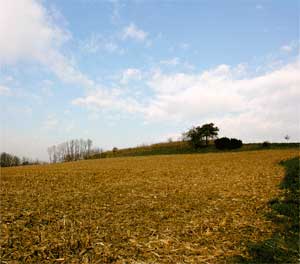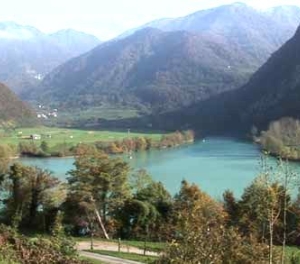Nature
CORMOR LANDSCAPES AND LITHOLOGICAL FEATURES
 The path goes through an area that is part of the Friulian highlands and the moraine hills. Here the plains are mainly made up of loose carbonaceous substrata composed of coarse materials carried here by river water (stones and gravel primarily of calcareous and dolomitic origin), which, because of their permeability, can only be used for crops that are not particularly demanding in terms of water requirements. The matrix created by the crumbling silicate rock is present in some limited areas.
The path goes through an area that is part of the Friulian highlands and the moraine hills. Here the plains are mainly made up of loose carbonaceous substrata composed of coarse materials carried here by river water (stones and gravel primarily of calcareous and dolomitic origin), which, because of their permeability, can only be used for crops that are not particularly demanding in terms of water requirements. The matrix created by the crumbling silicate rock is present in some limited areas.
On the other hand, the hilly area is characterised by an increase in altitude and modest gentle hills particularly suited to rural settlements and agricultural crops, especially vinegrowing. The moraine hills constitute the southern remains of the glaciation that formed the well-known moraine amphitheatres that crown the central part of the highlands; also found here are the Pliocene hills around the Buja area.
SLOVENIA
Ancient stories tell of miraculous sources of water of life that cure diseases and restore youth. Tolminska is the land of the water of life. Majestic waterfalls, beautiful fairy-tale water-holes, an exceptional and unique Soca (Isonzo), hidden channels, secret springs, gorges and canyons, infinite configurations that water drops have been carving into the rocks for thousands of years. The pearl of this land is the Nadiža river, in the summer pleasantly warm and, according to many visitors, a river with healing powers. The entire course of the Soca river in the region of Kobarid, the Trnovo and Kobarid gorges that come to an end at the attractive Napoleon bridge, is a unique natural monument. Less well-known is the gorge of the Nadiža river. The best known waterfall of Kobarid is called Kozjak; even more beautiful but difficult to reach (we recommend a guide) is the waterfall in the riverbeds of the Rocica torrent.
youth. Tolminska is the land of the water of life. Majestic waterfalls, beautiful fairy-tale water-holes, an exceptional and unique Soca (Isonzo), hidden channels, secret springs, gorges and canyons, infinite configurations that water drops have been carving into the rocks for thousands of years. The pearl of this land is the Nadiža river, in the summer pleasantly warm and, according to many visitors, a river with healing powers. The entire course of the Soca river in the region of Kobarid, the Trnovo and Kobarid gorges that come to an end at the attractive Napoleon bridge, is a unique natural monument. Less well-known is the gorge of the Nadiža river. The best known waterfall of Kobarid is called Kozjak; even more beautiful but difficult to reach (we recommend a guide) is the waterfall in the riverbeds of the Rocica torrent.
